In Medias Res: Nico Lazaro
The first installment of the revival of my oldest series
I’ve been friends with Nicolas Lazaro for over a decade, also known by his Tumblr/Instagram tag, nickelcobalt. We have a plethora of similar interests, and we’ve watched each other grow through quite a few phases of style and of life. I’ve photographed him countless times, originally for this series, which existed on my Tumblr to showcase the personal style of those that influenced my own style. It lived on via the ahead-of-its-time Four-Pins, and held a brief stay at Grailed. I now write and photograph a more developed series for Esquire called Five Fits With, and while Nico has already been a subject of the column, I wanted to catch up with him again. When you’re really into clothes, your style is, to an extent, an ever-moving target. That said, he’s someone who has consistently remained one of the best dressed people I know. He also has a new job and moved across the country since we last spoke on the record.
In Medias Res is latin for “into the midst of things.” It’s a literary term for when a narrative begins directly with events already happening, without preamble. This is how I’ve always looked at photography. I want the people I photograph to look back and remember a specific smell, conversation, or moment in time. At the very least, I want to continue to document those with style I’m inspired by. Since I know a host of stylish people, some of which are not traditionally well-known or Internet famous, I wanted to revive the series and begin to feature those folks here. I have no update as to how frequently I’ll do these, but I’m hoping to create more content like this in the coming months (and eventually charge for the content if there’s enough demand). As always, thanks for following along.
You moved out of New York to LA and were in New York for your whole life. So, tell me about LA.
Nico Lazaro: I was born and raised in the greater New York area. That was all I knew for most of my life. What excited me and what I wanted in life was the big city—big dreams of working in the fashion industry and being in the heart of it. I spent over a decade exploring that and living a really high-paced lifestyle. Then, the pandemic hit, and I realized I was more than ready for a change.
I went through a tough quarantine breakup, moved back in with my parents, and quickly realized I needed to prioritize my health, mental and physical. I wanted to explore living somewhere else, and it seemed like LA was the only other place where you could still have a career in the fashion industry and maintain a somewhat healthier lifestyle than New York. I was still at Grailed, working remotely, and asked for forgiveness instead of permission. I basically told them, “Hey, I'm already in LA. Can I just keep working here?”
What drew me to LA was the overall quality of life. Better weather, more sunshine, more space. Having a diversity of lifestyles and access to simple things like better produce and so many beautiful landscapes. New York has a great food scene and is beautiful in its own way, too, but I think everything is just more accessible, a little more affordable, and generally better in LA. I also started learning how to cook beyond the fundamentals, and it’s been nice to have an actual kitchen I can cook and move around in instead of a little two-burner or whatever you can usually find in New York.
Just knowing that I had friends and family in LA already, I felt like I had a little bit of a jumping off point where it wasn't a complete fresh start — it wasn't this great leap of faith. And I still had a job, luckily. I moved to the east side of LA, which is way different in terms of the overall vibe than the west side or even downtown. It's more like the Brooklyn of LA. Where I live is like a sort of Carroll Gardens, where it's a little more family-oriented. I live in Eagle Rock, and it's more spacious, more like a suburb. It doesn't feel like part of the city because it's nestled in a hilly area between Glendale and Pasadena. I was lucky to find a proper three-bedroom house, with a front yard, a backyard, garden, basketball hoop and a driveway. It’s a real suburban dream but still in close proximity to everything I love here.
And you live by yourself?
NL: With my partner and our two dogs, but yeah, no roommates.
When you first got to LA, what was your acclimation like?
NL: I staged it out, but it sort of happened that way because I was still working at Grailed. I didn't know if I could work remotely forever, but I knew a lot of people were traveling to places like Mexico City and Hawaii to work for the summer. I thought, “Let me go to LA. I'll rent an Airbnb and a car and see what life could be like.” I rented in Los Feliz because the few people I talked to told me to avoid the west side like the plague. Anything west of Hollywood basically becomes the brunch hat, Amiri-wearing crowd. So I landed just down the street from Maru. Maru is a good example of what’s great about LA: that these sorts of shops can integrate with the local community and reinvigorate it instead of completely gentrifying and wiping out a neighborhood.
There’s a great shop behind the Maru in downtown LA, Departamento, and it's helped make that area more of a destination and brought more life to the local community. I live down the street from Kumquat in Highland Park, and when I first moved here, it was sort of a hidden gem, but in the past couple of years, it seems to have caught on. It's just like everything else, you know, huge lines every morning. That's part of the reason I left New York. There are still a lot of good, grassroots projects coming up in New York, but it feels like it's been fewer and far between. And it's so much harder to set up a successful business from scratch in New York. Not that that's what I'm doing, but that's the stuff that gets me excited. I guess Drake's was one of the last brands to really pop-off, which technically started in London, but I remember the shop opening here on Crosby Street, and that was one of the last exciting things for me.
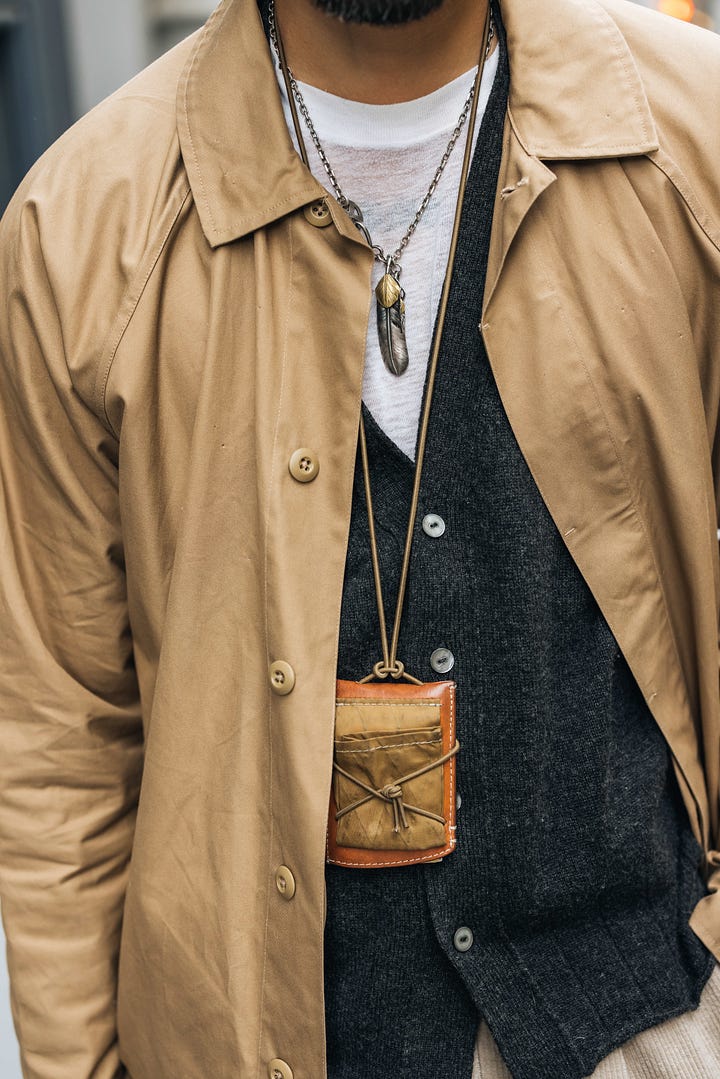

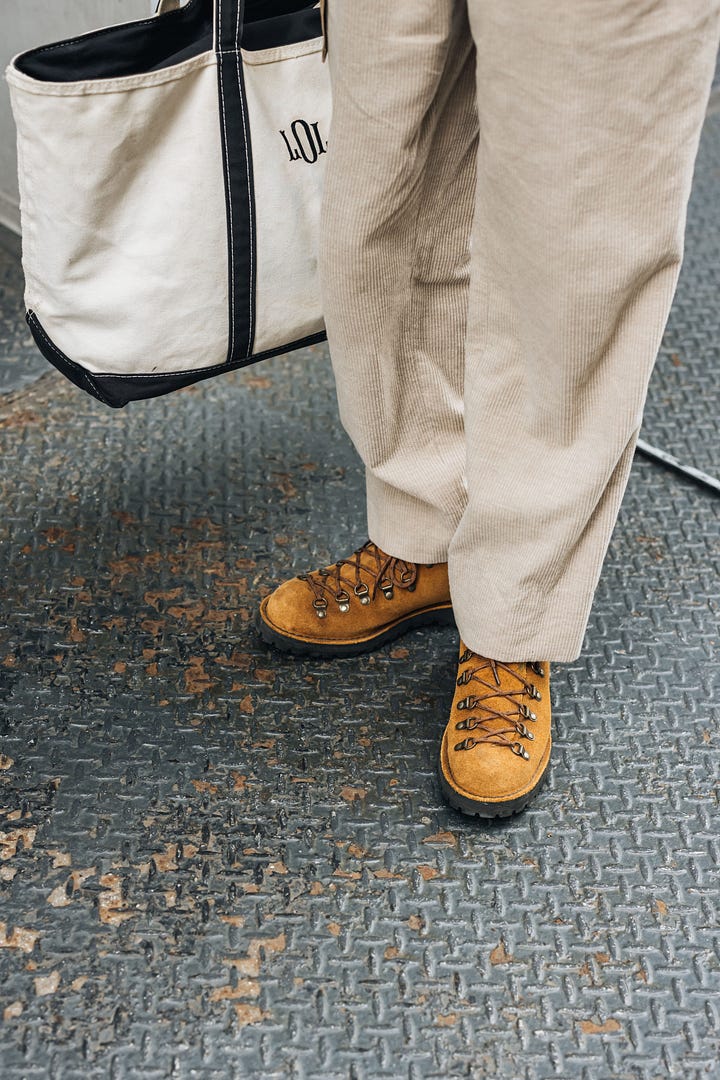

Outside of C’H’C’M and 180 the Store, multi-brand shops don’t really exist anymore.
NL: Like Totokaelo and Carson Street, so many innovators are gone now.
It's a really tough business model. Just seeing it while working at Carson Street, it's a really tough way to try and make money, and to make money, you probably have to have a private label—then it's a whole different ballgame. I do feel like there isn't much shopping in New York right now. Are you over going to physical stores?
NL: I appreciate smaller boutiques that have really good buys that are unique to their store—that adds value and it adds perspective. At this point in my life, what I look for is who's doing something cool, interesting, and new. In LA, I love Brother Brother and Departmento. Even Mohawk General Store has interesting stuff. I also understand if you're a transplant and you're coming to a big city, you just want access to the stuff that you already know is good. The classic shit. 3sixteen, Bode, 18 East, all great that those brand flagships exist here. If I was shopping in New York, that's where I'd go.
So if you're not really shopping, then how are you handling your style lately?
NL: I spent over a decade accumulating stuff, and knowledge as well, and have experimented to the point where I know what I like and I’ve bought most of the things I’ve wanted. I’ve always been into vintage. It was just the most accessible thing I could go for. Even before Grailed, on the buying and selling on forums, brands like Cloak, Robert Geller, and Dior were really only attainable for me second-hand.
It really informed my taste level and gave me access to the higher-end things that were aspirational for me. That’s carried with me through my whole interest in fashion. At this point, I'm realizing that it doesn't have to be any more than that. Getting down to what business people like to call first principles and thinking, “What is it that I love about these clothes?” At the end of the day, it’s stuff that’s versatile and good quality—which is a very nebulous term, quality—but things that are just well-made and look good with almost anything. That’s part of why I'm working at Buck Mason. All that stuff is rooted in the classics, and all in very neutral, easy-to-wear colors. When I'm buying clothes, I still appreciate the crazier stuff, and I'll incorporate one or two things for a little flourish without going overboard. Last winter, among the few things I purchased, were a pink Shetland sweater and an old Abercrombie multicolor striped Shetland. It's fun to incorporate those kinds of things. But on a day-to-day, I’m wearing the classics, more or less, but it'll be elevated in some way. Like this denim I brought, which is Bryceland’s 133 denim. It’s just a very subtle twist on a classic selvage denim. A bit like a 1930s cut, so a wider leg, but not like a crazy Rick Owens Mastodon. It's just enough to play with proportions in a way that is still familiar and classic. Also, Stoffa, which I'm wearing today, is very rooted in fabrics first, the neutral color palettes, and that high attention to detail. At a certain point in your journey, you just know it when you see it. If you see something that looks really good on someone, that's usually because there is care put into the details, how it fits, and the fabrics they use. If you don't know what to look for, Die, Workwear! or Derek Guy's Twitter, is a great resource. I still look to that when I want a reminder of what it is I love about fashion.
As I'm getting older, I’m really figuring out who I am in terms of style, or at least what it is that I want and what I want to look like. There are these moments you have when you're younger where you just experiment. I used to wear Rick Owens frequently. There are those interesting, weird brands that you have to experiment with to get to where you're trying to get to in the long run. If you're interested in clothing, it's probably always a work in progress. Something might change here and there. But getting older, I’m definitely prioritizing nicer things, buying less, and trying to do a one-in, one-out thing where if I'm buying something, I'm trying to sell something also. You mentioned them and I've been getting more Stoffa this year because the stuff is just so beautiful and so comfortable. Obviously, it's got a higher price tag than most of the stuff people are accustomed to spending on, but it’s worth it. In some cases, it might even be underpriced.
NL: It's stuff you're gonna have hopefully the rest of your life, depending on how many sizes you change over the years. To find out what that is for yourself, you need to be sharpening the knife. The same goes for personal growth. I started going to therapy at the start of the pandemic and being okay with making mistakes is such a big part of growth; understanding that you have to try things that might end up looking ridiculous when you look back on them, but the more you push those boundaries for yourself, the more you’re going to develop a signature personal style.
You can apply that to your life, too.
NL: It's like relationships or jobs, everything is just a learning experience, and it’s the best way to look at things, rather than an embarrassing mistake or something like that. You've seen me. I’ll wear kilts and skirts and tunics, and… I don’t know, crazy shit. I've worn women's clothes since high school. I got into that as a scene kid, wearing women's jeans and my sister’s skinny overcoats. I was always comfortable experimenting. Then, it's just been honing that and refining it down to what those first principles are for you. If I'm going to invest in something, if I'm going to spend $600 on a pair of pants, what is it I want out of those to justify that price point, rather than what other people might be telling you makes it worth (or not worth) that amount.
What would you tell someone who is younger and doesn't have the money for clothes but is a budding enthusiast? We’ve both been in this position ourselves. I’d gotten into clothes and had no way of actually buying 'em. I hate to always vilify Instagram, but social media creates this thing in people where they feel like they have to keep up.
NL: It's all personal, and you just have to follow those threads of things that you find interesting. Maybe that's silhouettes and shapes. If you're like, “Oh, I really wanna try a wider leg, like the Levi's 517s, with a tight T-shirt and a trucker hat kind of look,” go to the bins or thrift stores or go find the exact thing you want and try it on. Take photos in a fitting room, see if it works on you, and if it doesn't, experiment more with proportions until you figure it out.
On the other side of that, there's also the research end of it. Why do Levi's 517s exist in the first place? Why did that silhouette come to fruition? You can get to understand the historical context and relevance of something, and that adds value and gives you information on how to wear it.
For me, the historical aspect of things is really interesting to see. Why is denim ubiquitous today, and how does work wear interplay with tailoring and western wear which all seem to come from different worlds? How is it that you can string together and connect all these seemingly disparate influences? A decade ago, menswear was really limiting in terms of things like, “These are the 10 essentials you have to buy.” You needed raw denim. You needed an Oxford shirt. You needed these specific $400 Common Projects sneakers. At this point in history, right now is a great time to be experimenting and defining for yourself what you find valuable and what you think actually looks good on yourself.
A lot of that also comes from culture. For me, growing up and coming of age during the Tumblr era, there was so much reference to the culture at large, even at Grailed, seeing how rappers dressed, the way they mixed things together and styled them was really empowering. Look at aspects of culture that resonate with you. For me, back in college, it was leaning into this sort of elitist take on French New Wave auteurs and the Wes Anderson, The Royal Tenenbaums sort of old-money look. In high school it was the emo uniform of band tees, skinny jeans and Vans. I wanted to dress like the people that I aspired to be. That goes back to how Ralph Lauren built his business by trying to make suits and ties that looked like what Fred Astaire used to wear. Everything is referencing something else, whether you recognize it or not. The deeper you can dive into those references, once you understand them, it can help you understand your own personal style and get a little bit more comfortable with experimenting within that world and defining the boundaries for yourself. That's what experimenting is: toeing the line of being potentially uncomfortable until you figure out what works for you.
Tell me about your new job and what you're doing.
NL: I started in January at Buck Mason. I'm the editorial manager there. Basically, my role is storytelling. Finding ways to tell interesting stories, not just around the products they sell, but the world around it; the inspiration, the history of textiles and garments, how people are wearing these things that have been around for 100+ years now in contemporary daily life. For example, we do a deck jacket that's based on the N1, which was the first deck jacket in World War II. It was originally in a Bedford cord fabric called Jungle Cloth and was fully alpaca-lined. It was really the first military jacket—and I could be butchering this—that crossed over into popular culture because motorcycle gangs had adopted it first. Then that crossed over into young Hollywood. There are photos of the Hells Angels wearing them, and James Dean, Paul Newman, and so on. It just ages well. With Buck Mason, they're trying to get back the same things that made these iconic American styles great: creating things that are timeless and get better with age. Referencing those classics, but bringing something new to it. That's really so cliche, but it is what makes something good at the end of the day. Like I said, everything's referencing something else, so the more you can understand those references and play with them, there are interesting things you can do—making things that are rooted in something that people understand, but take it to a new place. Not that Buck Mason is doing anything insanely groundbreaking, but I appreciate that it's helping the average guy dress a little bit better by making it a little bit easier. The neutral color palettes make it easy. The quality fabrics that they use. It's all stuff that is familiar but slightly elevated.
I’ve fallen out of love with fashion calendar fashion. I still look at some stuff, but I just don't pay attention the way I did. I don't know if the people we grew up with together feel that way or not. Do you feel that way?
NL: Totally. As a whole, it's the same thing with VC-funded startups where there's just a constant expectation of exponential growth. And every season, every collection has to be this entirely new groundbreaking newsworthy thing. I love what Rick Owens does because it's iterative and it's building on—I hate these words, but—core principles. He has a fundamental core identity. Same with Ralph Lauren. He's been doing it forever, so it's a little stale at this point, but you gotta respect someone who's been able to do it for that long. Beyond the big names, there are some smaller brands that I admire. For Aimé Leon Dore, Bode, and Drake’s to have such a defined visual signature that you know when something is theirs, is admirable whether or not you think it's in good taste. The trend cycles, the system of seasonal collections and manufacturing, and traditional retail, for me, feels so fraught with unsustainable practices that I find myself rooting for its downfall. I hate sustainability as a word, too, but what I mean is that it's just not responsible or ethical in this day and age.




Why do you hate the word sustainability?
NL: It's just an empty buzzword at this point. It's like “organic.” What does that actually mean? It can mean anything to anyone. In fashion, there are no actual policies in place to keep people accountable for doing things that are environmentally irresponsible. My girl Ruby is actually making dresses now, and she's been looking for a factory to work with because the last one she worked with burned down over the summer. She's trying to work with a factory overseas potentially, and it's like, what do these credentials even mean? Who's actually vetting these things? She wanted to visit the factory, and they were like, “Uh yeah, you can't do that. Don’t come here, we won’t let you in”. So, how do I know that these people are actually being treated ethically and that there are fair working conditions and fair pay? There are brands and factories that do that well and that are very transparent. Again, Stoffa is a great example. I'm not well-versed enough in the politics of it all, but that's why I don't like sustainability as a word. If you see that on a brand's website, it doesn't necessarily mean anything. Like do they have documentation of that? How can they guarantee any of it? We just need more investment in infrastructure and policies around it before it can mean anything.
Let's end this on a somewhat positive note. What are you fucking with at the moment? And that could be anything. I don't know. TV, clothes, food, movies.
NL: I got really into brainless TV, so I don't know if that's a great route to go down. Like The Real Housewives and all the Bravo stuff. Clothing-wise, I'm wearing 3sixteen right now. I'm wearing Stoffa. I love small brands that stay very rooted in what they do and have an established track record and a really well-defined aesthetic. Bryceland’s as well is super cool. And I’ll always love vintage. I’m always on eBay, and I have saved filters for certain time periods and certain makers from those eras. I love vintage denim and indigo-dyed workwear especially.
If you go to Kinokuniya, there's this line of Japanese magazine called Lightning Magazine, and they do deep dives on a single concept like cool t-shirts for example. The best T-shirts are from before the early 90s - I love single-stitched T-shirts. It's such a sort of snobbish thing to like. There isn't necessarily anything qualitative that's better about a single-stitch t-shirt, it’s just how they used to make them before the 80s or 90s, and there’s something about how they feel and wear over time. T-shirts, in general, are a whole rabbit hole you can go down, and that's something I've experimented with. Nowadays I pretty much wear tees every day. A lot of vintage ones mostly.
I also love really good knitwear. I'm just getting back to the classics and getting back to what, for me, is the best version of something now that I've run the gamut and experimented. I'm into wider-leg pants, like Stoffa’s drawstring pants. I read Yukio Akamine’s interview with Die, Workwear! I think it was in that blog post with Derek where he talked about an 8.5-inch leg opening being ideal for the average Japanese man’s silhouette, which is so ridiculous, but there’s something to that. There’s something of a nebulous formula to balance proportions, and when you get into tailoring, you start to understand how things should fit the body. At this point in my life, knowing how I like things to fit, that's ultimately what I look for. It could be some vintage polyester junk from the 70s— I have a shitty acrylic cardigan, but the fit is just right, and that's all that matters to me at this point. It's gonna last long, it's gonna look good, and it's gonna fit me the way I want it to.
On the feet, I pretty much only wear loafers without socks most days. I’m wearing hiking boots today because I'm walking around the city all day, and I know they’re not gonna kill my feet. And one last thing I've had fun incorporating is tailoring, too. Getting back to the #menswear stuff and mixing it into my daily rotation.

I'm coming right back around to #menswear also.
NL: Totally! Like the nice, casual sport coat. For me, the trousers are a big thing. You wear nice trousers with a denim jacket and it looks really, really elevated. What else?
You said you’ve been cooking a lot.
NL: This will be one you'll appreciate. I think my biggest point of inspiration in life, honestly, since I met him, is Justin Dean. His aesthetic is so refined, and his understanding of himself and what looks good on him. He always looks really well put together. And then, in his Instagram stories, he’s watching Criterion Collection movies all the time, and he's got a great collection of books about film. Knowing yourself to that extent is something I still aspire to,] and I think that's the direction I'm trying to head in. But he came to mind because his focus on nutrition and whole-food cooking really helped me to focus on my own health.
I used to work with him. He really lives that life. If anyone reading this follows him on Instagram and sees his posts and thinks, “I wonder if he's just posting that shit.” He’s not.
NL: I've always tried to be the same way. I don't want to act like I'm someone I'm not online, but when you're experimenting, you're still finding yourself. He's experimented within his own constraints, but he's definitely had a really refined sense of self from the start. It's been great to see him grow into that. He's still someone I look to very often on that kind of basis. It's very hard for me to get excited about anything nowadays. Whenever I see a post from him, I'm like, “Damn, he's still doing it and he still looks great.”
I think it’s our connection to these phones, man. It’s that the element of surprise has fallen away, and there’s a lot of mediocrity out there in general. In a way, it sucks, but in another way, it makes you appreciate special things even more. Special people. Special moments. Special words.
NL: You know, when you see it, just trusting your gut on things too, and following that. If you make a mistake, you make a mistake. It's all subjective, too, so what one person thinks about something isn't necessarily what you need to believe in. Skinny jeans can still look good! I don’t think anyone should be so firmly planted in their beliefs. I’ve been gravitating towards wider legs because it's just what I feel most myself in, but that won’t be true for everybody. The goal is to find yourself in your clothes and to find things that make you feel like yourself.
What music are you listening to these days?
NL: Mostly older stuff I guess? I've been listening to more audiobooks and shit, dude. I'm getting old and set in my ways at this point. When I'm driving to work, I'm just listening to audiobooks mostly, and then my Dad Rock playlist or some Title Fight, or old-school hip-hop. I'll listen to new albums every once in a while, but not that often.
To close, tell me about your Substack.
NL: It's very personal for me. I didn't want to do trend reporting or talking about like, “These are the things you need to buy,” or any of that kind of stuff. You can go to GQ for something like that. How I got into it all these years back was finding people that I related to and learning what interests them about the world and what got them into this scene and got them excited about things. That’s what I try to translate in my Substack, talking about what I'm currently wearing, what I'm currently into, and why it is that I find those things valuable or important. I'll probably also start incorporating more educational stuff. I dabbled with it a little bit, and it's just so hard to find time to do or translate what’s valuable because everyone's journey is so personal when it comes to developing your style. I just try to have fun with it. I’ve been happy to be able to connect and continue to share that kind of stuff.



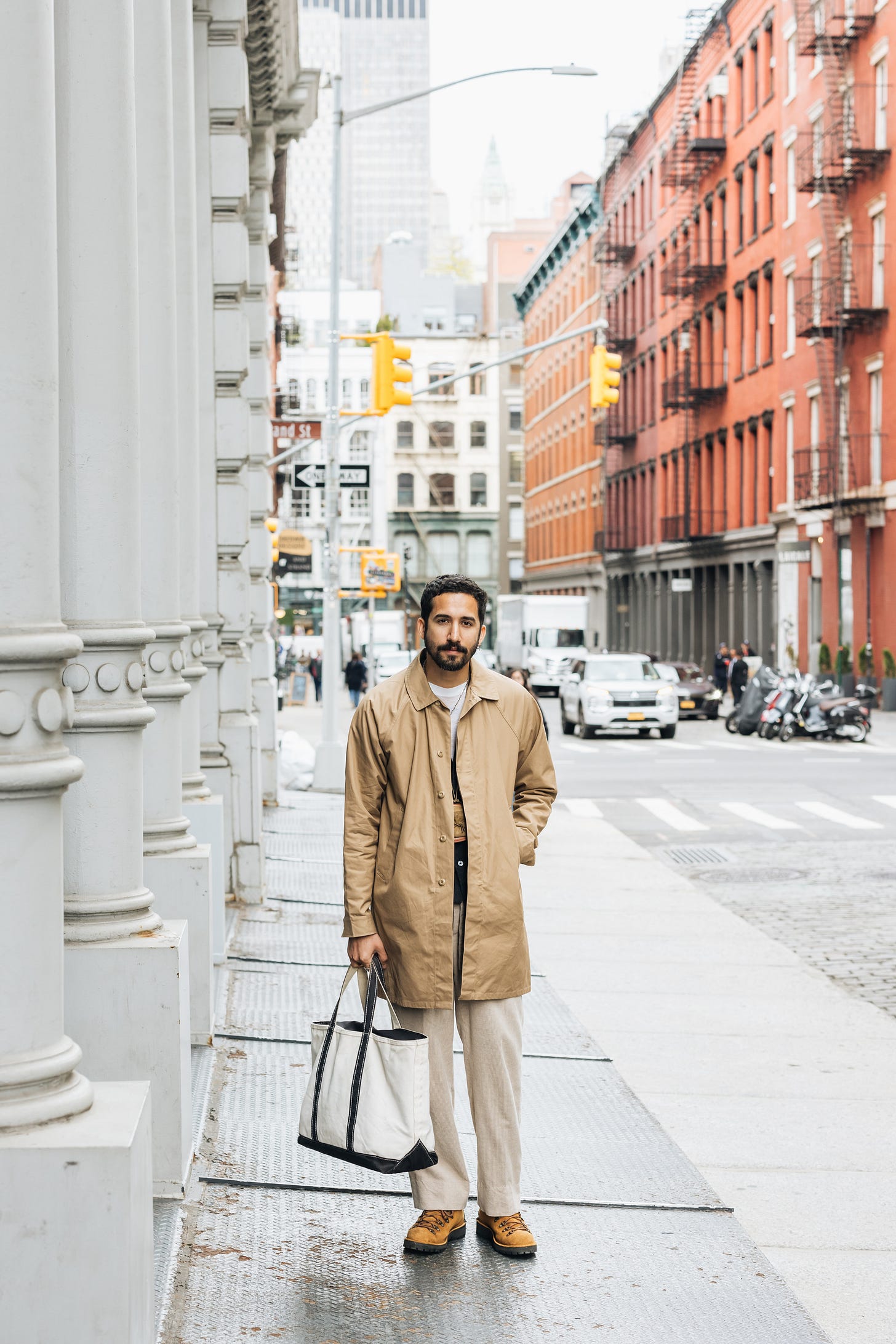
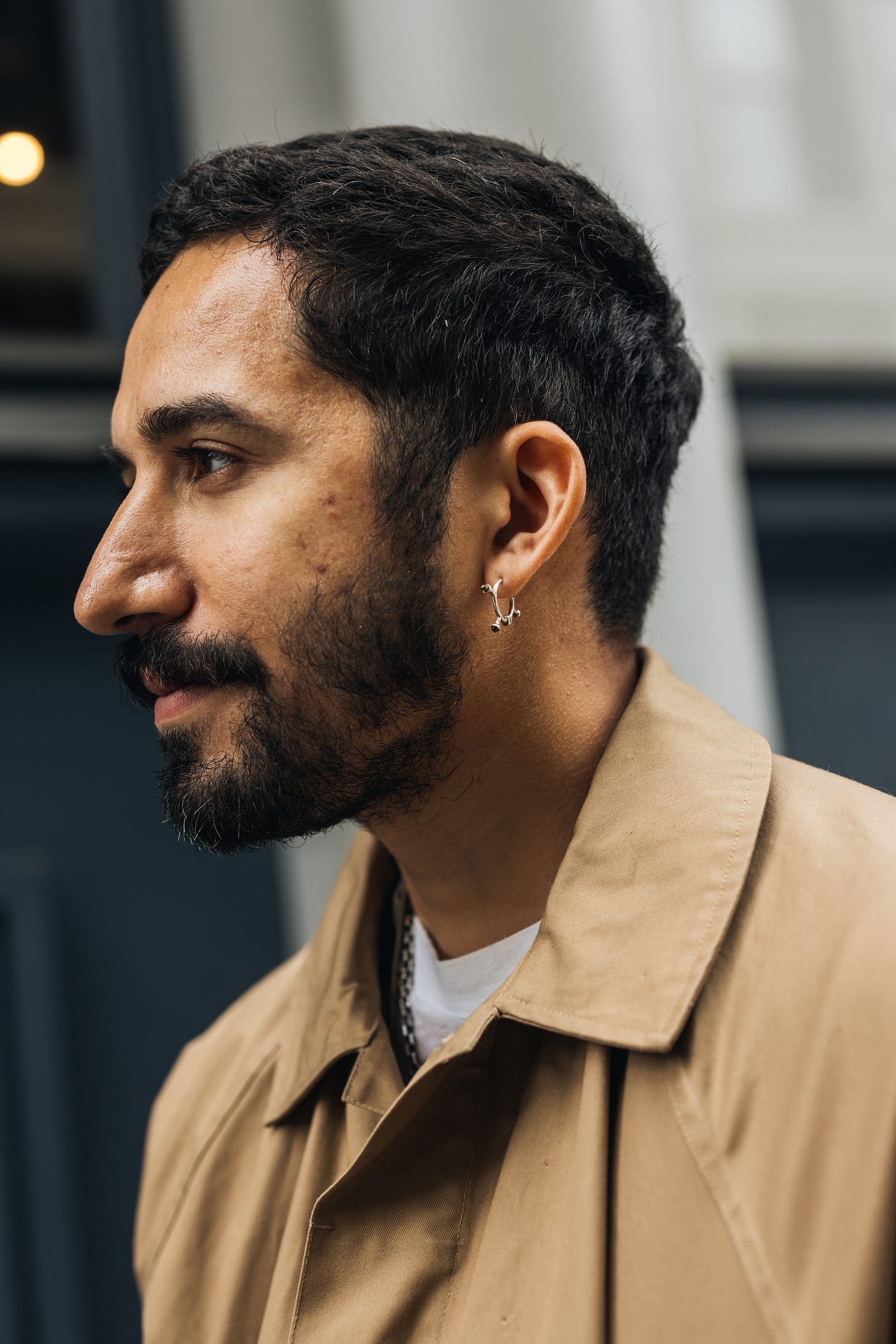

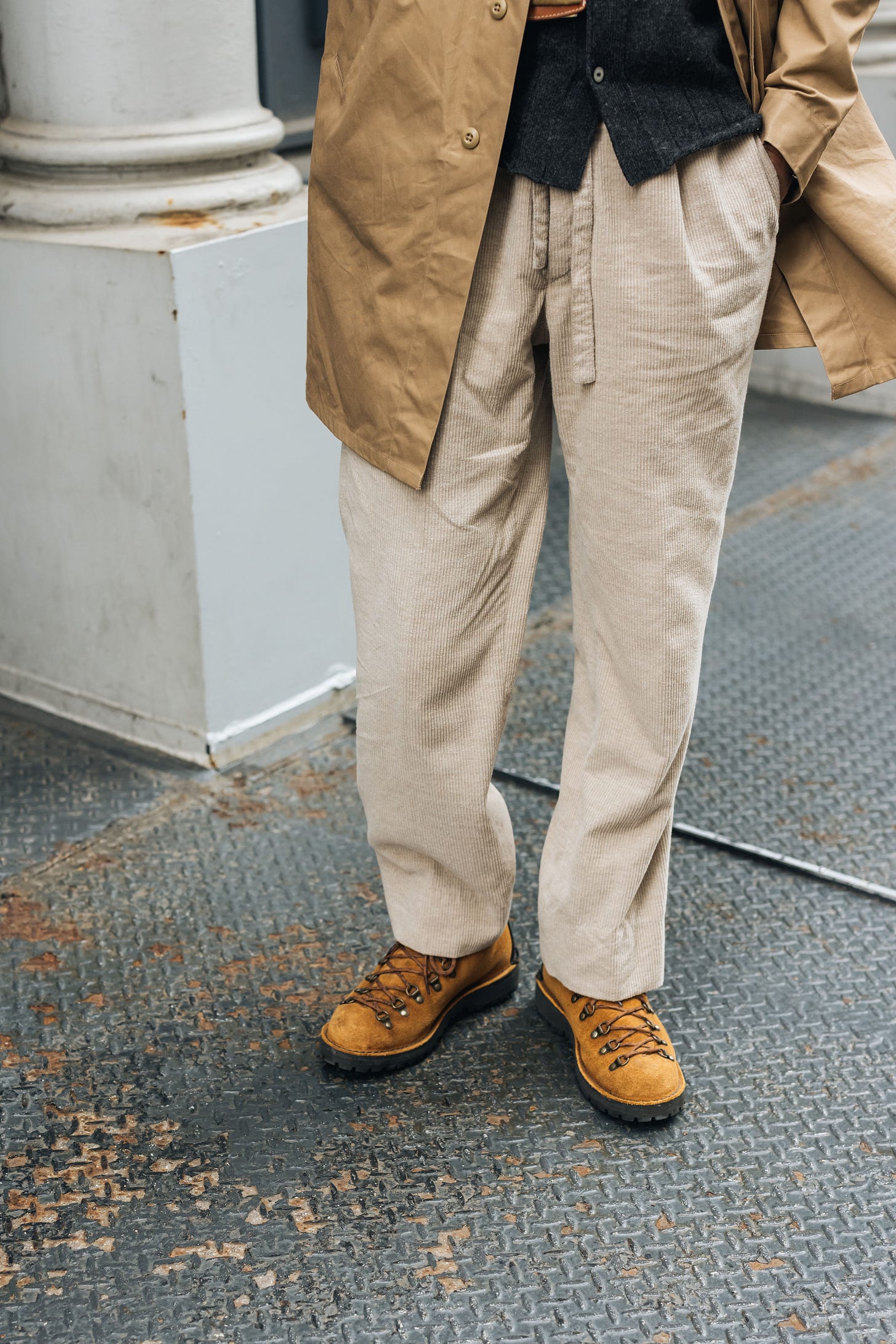
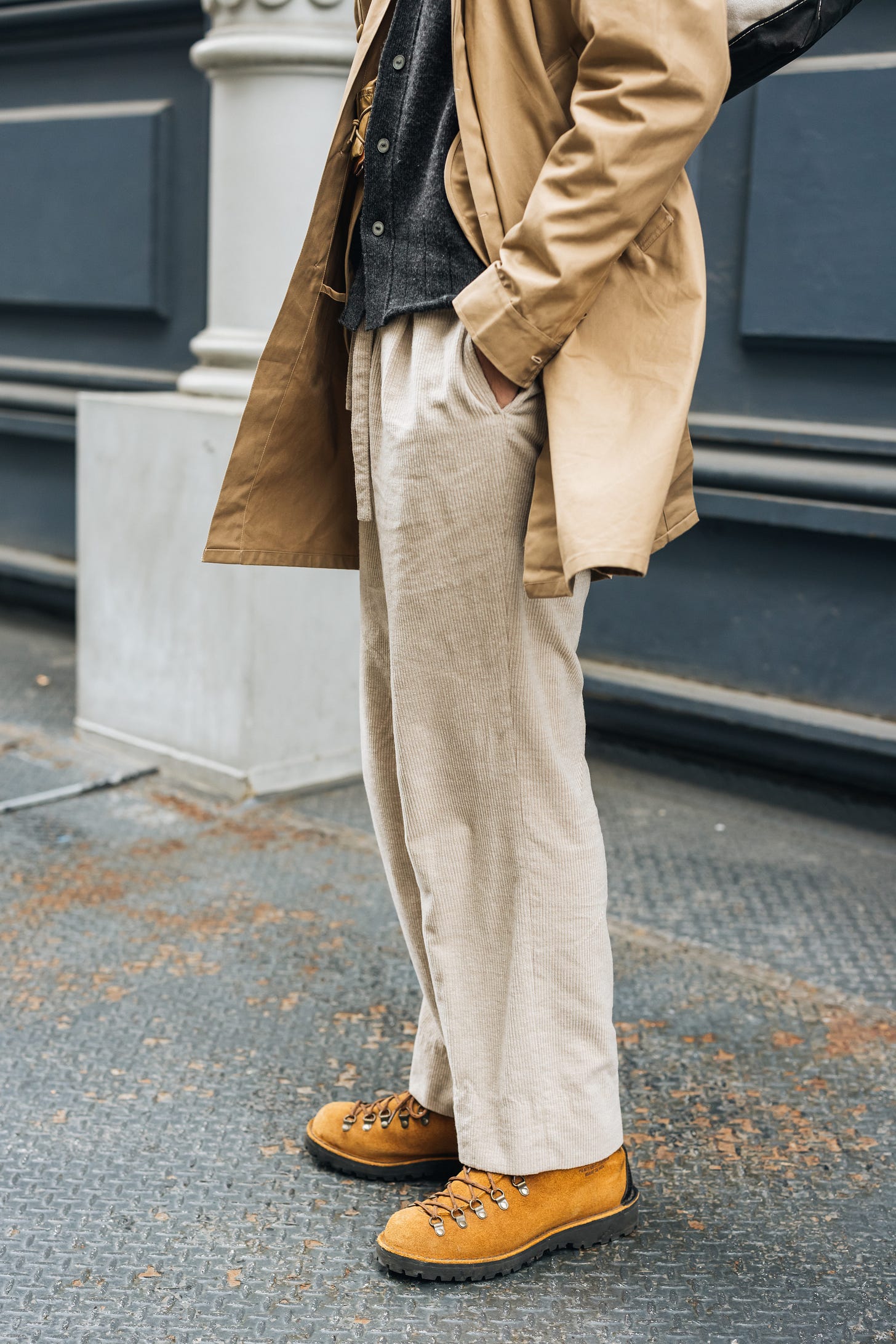
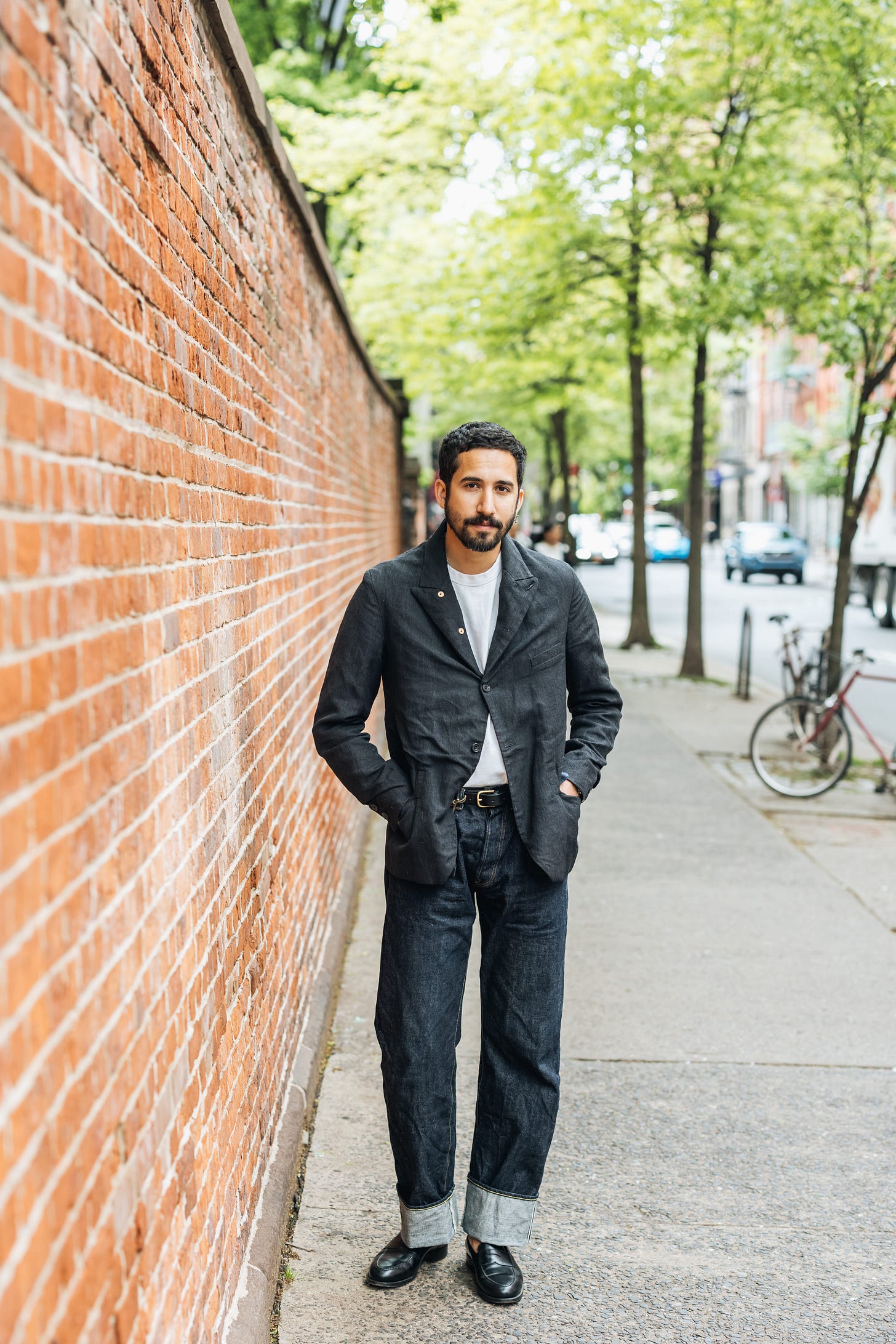
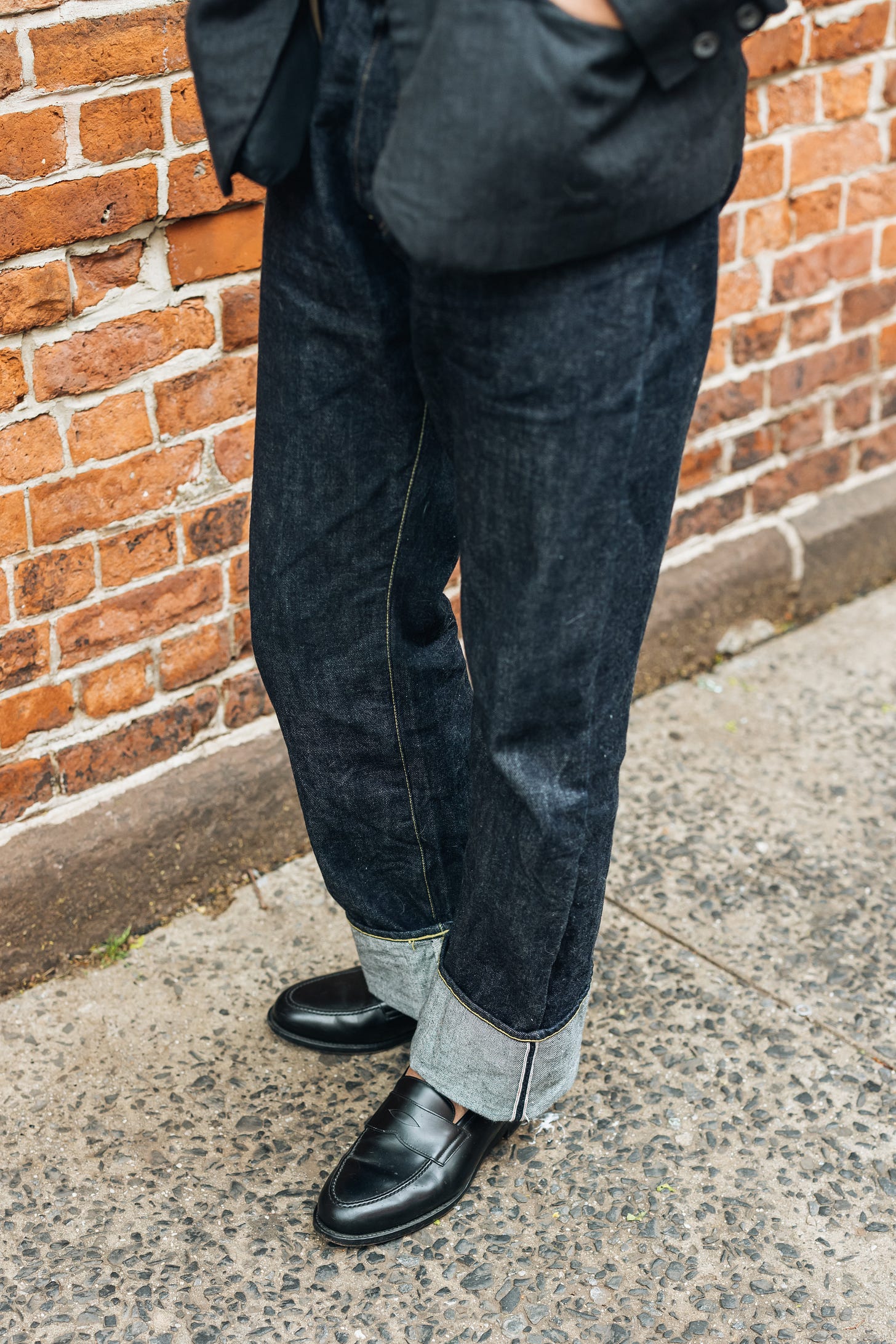
Very interesting article-obviously a labor of love & respect for the subject. A Great re-start & I wish you continued success! 👏🏽
Thank you for doing this🙏 I’ve been into clothing since around 2010 and being from another continent I was always interested in what’s happening in the States. Including following you two and the other folks like Four Pins and Derek Guy. So it’s like I’ve been growing up in this thing together with you and it’s interesting that even though I explored different directions in fashion I arrived to similar (temporary) conclusions as you did in this talk.
Also, amazing effort to put together such a long interview💪 Looking forward to the future episodes!